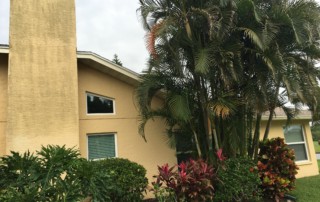If you are a Venice area homeowner, there are few things more troubling than a roof leak when it comes to home maintenance.
Often, by the time you are aware of the problem, there is damage lurking in hidden places, and the fear is that fixing the leaky roof may be costly and time consuming. This is why making sure that you stay on top of proper and regular maintenance is truly important.
It is an especially frustrating situation when you think you have patched up the leak, but you see those tell-tale drips after the next Florida rainstorm. In order to best protect your home, you will absolutely want to identify and completely fix all sources of your roof leak.

Where Could the Roof Leak Be Coming from?
Water travels a path of least resistance, and when it finds a way into your home’s structure it will continue to seek out new ways to flow downward. There are many possibilities as to where the water is intruding, so if your roof leak is persistent, you should check them all.
- Broken Tiles or Damaged Shingles: Your roof has an underlayment covered with roofing material such as shingles, tiles, or stone. These two layers work together. So if water is making its way into your home, the first place to check for damage is the surface of your roof. All broken, curled, eroded, or missing roof material should be fixed or replaced as soon as it is discovered.
- Breach in the Underlayment: If you find damaged roofing material, check under the compromised area to determine if the underlayment has been damaged as well. This second line of defense will provide direct access into your attic or eaves if water is allowed to intrude.
- The Eaves and Gutters: The expanse of your roof may be intact, but damage along the eaves, fascia and gutters may be allowing water intrusion. Inspecting your gutters for blockages or damage will help to prevent water backing up into your home through these tangential areas of the roof.
- Skylights & Chimneys: Any roof penetration is a likely area for leaks to occur. If your roof is showing no damage but water is clearly coming from above, check the seals on all skylights and chimneys. The water may in fact be leaking into the space between the roof and the skylight if the sealant is old or cracked. If you are noticing water along baseboards or on lower sections of wall, you may also wish to check the seals on your nearby windows.
- Plumbing and Pipes: The roof leak my not be coming from your roof at all. If you have had your roof inspected and cannot determine where the water is coming from, you should call a plumber to check out the pipes in your home. A hidden pipe burst could be leaking into your attic, ceiling, or walls and mimicking a roof leak.
If you see staining on your walls, drips forming on the ceiling, or notice dark or damp areas on the structure in your attic, you may very well be dealing with a roof leak. Annual roof inspections are a great way to catch any minor damage which may have occurred, in order to stop the leak before it begins. If you have any concerns or suspicions at all, do not hesitate to call a professional to mitigate the situation before it becomes a large headache (and large expense).
[company_name] Services is proud to provide expert advice and quality roofing services to keep your home safe and dry throughout the year.


